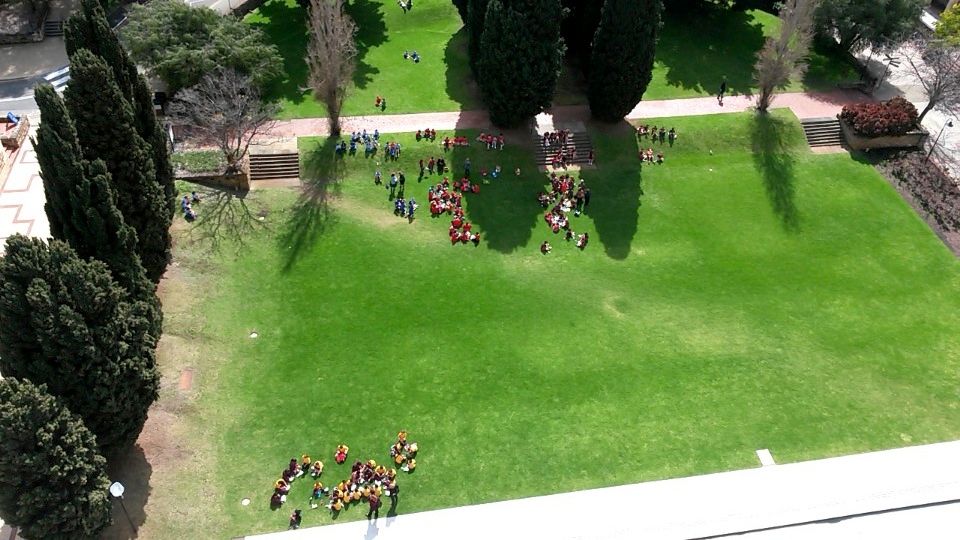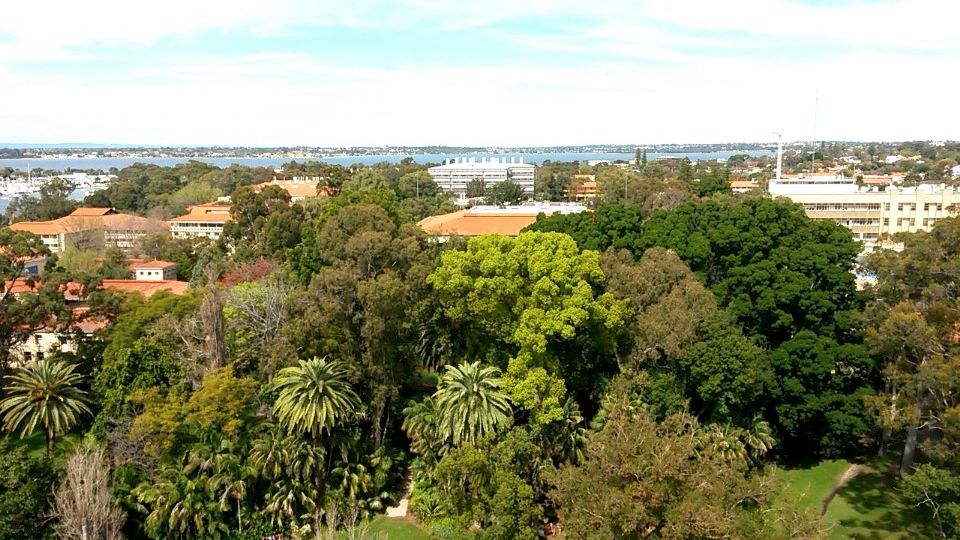Just to let you know,
things at uni are getting pretty hectic.
I've got my "major assignments" for all my units.
So it's time to start working hard!
But before that,
let me just yell 'Congrats' to all my friends back home,
who've just had their first week of uni.
I hear cries of anguish already.
I am quite excited to share the Ups and Downs of uni with them.
#UniLyfe
Not that I've got that out of the way,
maybe I'll share a bit about what these "major assignments" are about.
For Organisation Behaviour,
we have to produce an article/essay about the Self-Fulfilling Prophecy.
Let me explain SFP with an example.
You see a guy you don't know.
He looks like a jerk to you.
You interact with him,
but you (unconsciously) treat him like a jerk,
because that's the picture you've painted of him.
He, in turn, becomes unhappy and starts acting like a jerk.
THE PROPHECY CAME TRUE.
He became the person you think he is.
So, to put this in theory:
Your perception of someone will cause you
to behave according to your perception.
You behaviour will affect that person and they will react accordingly.
It's quite interesting, I must say.
Alright, let's not get sidetracked.
For economics, another essay!
This time about Common Property.
I'm sure no one likes economics (I don't either),
so I probably won't explain what common property is.
For Data Analysis, we have to….
analyse data.
Ok let's not go into that too…
And last but not least,
for Biology, we're writing a mini-review (AKA essay…again)
about the cross-kingdom symbiosis of animals.
And that's what I'll write about in this blog post.
Forgive me if this topic bores you incredibly.
But I just thought this would be a good opportunity
to practice my Scientific Communication skills
(not that I have any…).
But more importantly,
it'll help me structure my actual assignment better.
Now that I've given fair warning,
read at your own risk. =)
So, for this mini-review,
I'll be writing about the Northern Flying Squirrel.
Scientific Name: Glaucomys sabrinus.
It's a squirrel (clearly…) located in the U.S.
And when you think about squirrels,
what usually follows is nuts, acorns and trees.
But this is a slightly more interesting species.
It canFLY glide.
Its "loose" skin can act as a parachute when it jumps off a tree,
which can be extremely beneficial.
Now isn't that fascinating?
But what my review is focusing on is its symbiotic relationship with fungi!
What kind of fungi you ask?
Mycorrhizal fungi.
As many of you know, mushrooms use wind or water to spread the spores.
The spores land somewhere and a new mushroom appears.
A mycorrhizal fungi could do that too…except,
they're all UNDERGROUND (...or at least some of them) !
How are you supposed to let the wind blow your spores away,
when your whole body is underneath the surface of the Earth?
That's when the squirrel comes in.
Our tiny lil' mammal "flies" down to the ground.
Tracks down where the mycorrhizae is (mainly through smell).
Digs it up.
And eats the fruiting body of the fungi (ie: Truffles).
The spores of the fungi are super-strong.
So it wouldn't be digested easily.
It stays safe in the gut of the squirrel.
UNTIL it's time to use "excrete".
The spores exit the squirrel and land somewhere far away from its "mother".
And it begins to germinate and grow.
This is the life cycle of mycorrhizae.
That's a pretty concise summary of the squirrel-mycorrhizae relationship.
The squirrel eats the mycorrhizae's fruiting bodies and gain nutrients.
And the mycorrhizae benefits by using the squirrel to spread its spores.
It's a WIN-WIN situation.
Both parties benefits.
Its a mutualistic symbiotic relationship.
Happy Endings !
That's how most organisms function in an ecosystem.
They can't do things alone.
They usually work with a partner organism.
In fact, some organisms are sooooo dependent on these relationships,
their names actually describe the symbiotic relationships they have.
An example would be Lichen.
Lichen isn't actually a name for an organism,
but the name for the Algal-Fungi relationship.
The algae (think: seagrass) and fungi both have their own names,
but they depend on each other so much that they're inseparable !
And that's why we call them Lichens.
Now what's another example?
How about mycorrhizae !
Mycorrhiza isn't the name of the fungi.
It's the name of the fungi-plant relationship.
Some fungi grow underground (like the one I described with the squirrel!).
And they stick to the roots of trees.
By doing so, they leech the sugar and energy that the tree produces,
during Photosynthesis.
And the fungi returns the favour by giving the tree
nutrients it finds underground.
Observe the figure above.
You'll see that a tree can't take much nutrients with such a small root system.
But with the mycorrhizae growing with the tree,
it's widespread root system will highly enhance the range of area
where nutrients in the soil can be taken.
This is another mutualistic relationship.
The mycorrhiza fungi takes the tree's energy,
and the tree takes the fungi's nutrients.
What's surprising is mycorrhizal relationships exist in easily more than 60% of all trees.
Next time you see a tree,
remember there might be a fungi living right underneath it.
Most symbiotic relationships don't happen because organisms are nice to one another.
They are selfish little bast*rds.
It just so happens that,
by coincidence,
their interaction benefits both parties.
Let's go back to our squirrel.
It wants to eat and survive,
it couldn't care less about those spores its helping the mycorrhiza spread.
But, almost unintentionally,
the actions of the squirrel has benefitted the mycorrhiza.
In most cases,
this relationship ends here.
But wait !
The squirrel is actually INCREDIBLY important to an ecosystem's health,
BECAUSE it helps spread mycorrhizal spores around.
And what does mycorrhizal spores do?
It helps trees.
You can't have a lush green forest without any trees, can you?
And trees need nutrients to grow.
Its root systems aren't good enough.
What do they need to help with nutrient uptake?
Mycorrhizal fungi !
And those fungi ARE there when the tree need them.
And its ALL thanks to our trusty squirrel (G. sabrinus).
Because of it,
the spores are spread all over the forest.
Lots of trees have mycorrhizal fungi helping them.
And the forest lived happily ever after.
Can you see the bigger picture now?
The squirrel-mycorrhizae relationship helps ENHANCE
the mycorrhizae-tree relationship!
And again, all this probably isn't planned.
It's just Mother Nature making miracles happen, naturally.
This is the story,
of how a squirrel's fungi lunch,
has saved an entire ecosystem of trees.
Oh Ecology,
How I love you.
Listening to Next Chance to Move On - Shihoko Hirata
And that's what I'll write about in this blog post.
Forgive me if this topic bores you incredibly.
But I just thought this would be a good opportunity
to practice my Scientific Communication skills
(not that I have any…).
But more importantly,
it'll help me structure my actual assignment better.
Now that I've given fair warning,
read at your own risk. =)
So, for this mini-review,
I'll be writing about the Northern Flying Squirrel.
Scientific Name: Glaucomys sabrinus.
It's a squirrel (clearly…) located in the U.S.
And when you think about squirrels,
what usually follows is nuts, acorns and trees.
But this is a slightly more interesting species.
It can
Its "loose" skin can act as a parachute when it jumps off a tree,
which can be extremely beneficial.
Now isn't that fascinating?
Figure 1. A northern flying squirrel (Glaucomys sabrinus) exhibiting its unique physiological ability to glide.
But what my review is focusing on is its symbiotic relationship with fungi!
What kind of fungi you ask?
Mycorrhizal fungi.
As many of you know, mushrooms use wind or water to spread the spores.
The spores land somewhere and a new mushroom appears.
A mycorrhizal fungi could do that too…except,
they're all UNDERGROUND (...or at least some of them) !
How are you supposed to let the wind blow your spores away,
when your whole body is underneath the surface of the Earth?
That's when the squirrel comes in.
Our tiny lil' mammal "flies" down to the ground.
Tracks down where the mycorrhizae is (mainly through smell).
Digs it up.
And eats the fruiting body of the fungi (ie: Truffles).
The spores of the fungi are super-strong.
So it wouldn't be digested easily.
It stays safe in the gut of the squirrel.
UNTIL it's time to use "excrete".
The spores exit the squirrel and land somewhere far away from its "mother".
And it begins to germinate and grow.
This is the life cycle of mycorrhizae.
That's a pretty concise summary of the squirrel-mycorrhizae relationship.
The squirrel eats the mycorrhizae's fruiting bodies and gain nutrients.
And the mycorrhizae benefits by using the squirrel to spread its spores.
It's a WIN-WIN situation.
Both parties benefits.
Its a mutualistic symbiotic relationship.
Happy Endings !
That's how most organisms function in an ecosystem.
They can't do things alone.
They usually work with a partner organism.
In fact, some organisms are sooooo dependent on these relationships,
their names actually describe the symbiotic relationships they have.
An example would be Lichen.
Lichen isn't actually a name for an organism,
but the name for the Algal-Fungi relationship.
The algae (think: seagrass) and fungi both have their own names,
but they depend on each other so much that they're inseparable !
And that's why we call them Lichens.
Now what's another example?
How about mycorrhizae !
Mycorrhiza isn't the name of the fungi.
It's the name of the fungi-plant relationship.
Some fungi grow underground (like the one I described with the squirrel!).
And they stick to the roots of trees.
By doing so, they leech the sugar and energy that the tree produces,
during Photosynthesis.
And the fungi returns the favour by giving the tree
nutrients it finds underground.
Figure 2. The root-system of a typical plant (left) and the mycorrhizal-enhanced root system (right).
You'll see that a tree can't take much nutrients with such a small root system.
But with the mycorrhizae growing with the tree,
it's widespread root system will highly enhance the range of area
where nutrients in the soil can be taken.
This is another mutualistic relationship.
The mycorrhiza fungi takes the tree's energy,
and the tree takes the fungi's nutrients.
What's surprising is mycorrhizal relationships exist in easily more than 60% of all trees.
Next time you see a tree,
remember there might be a fungi living right underneath it.
Most symbiotic relationships don't happen because organisms are nice to one another.
They are selfish little bast*rds.
It just so happens that,
by coincidence,
their interaction benefits both parties.
Let's go back to our squirrel.
It wants to eat and survive,
it couldn't care less about those spores its helping the mycorrhiza spread.
But, almost unintentionally,
the actions of the squirrel has benefitted the mycorrhiza.
In most cases,
this relationship ends here.
But wait !
The squirrel is actually INCREDIBLY important to an ecosystem's health,
BECAUSE it helps spread mycorrhizal spores around.
And what does mycorrhizal spores do?
It helps trees.
You can't have a lush green forest without any trees, can you?
And trees need nutrients to grow.
Its root systems aren't good enough.
What do they need to help with nutrient uptake?
Mycorrhizal fungi !
And those fungi ARE there when the tree need them.
And its ALL thanks to our trusty squirrel (G. sabrinus).
Because of it,
the spores are spread all over the forest.
Lots of trees have mycorrhizal fungi helping them.
And the forest lived happily ever after.
Figure 3. The benefits obtained from the symbiotic relationships between the northern flying squirrel
(Glaucomys sabrinus) and mycorrhizal fungi and between mycorrhizal fungi and coniferous trees and between coniferous trees and G. sabrinus.
Can you see the bigger picture now?
The squirrel-mycorrhizae relationship helps ENHANCE
the mycorrhizae-tree relationship!
And again, all this probably isn't planned.
It's just Mother Nature making miracles happen, naturally.
This is the story,
of how a squirrel's fungi lunch,
has saved an entire ecosystem of trees.
Oh Ecology,
How I love you.
Listening to Next Chance to Move On - Shihoko Hirata
Breaking Assignments,
TK










